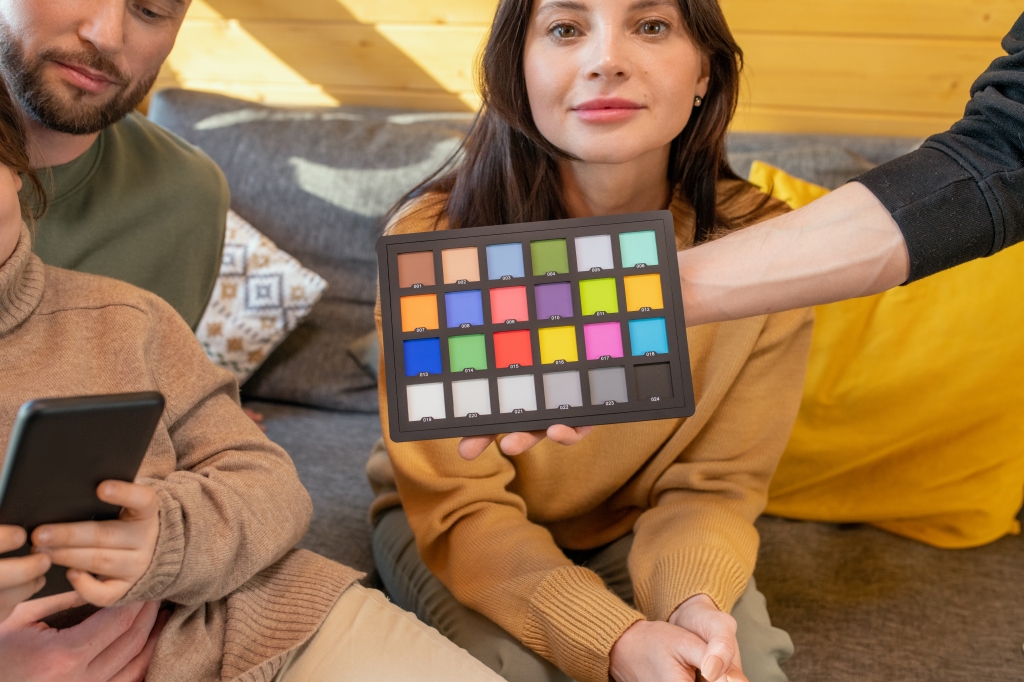
Welcome to the colorful realm of filmmaking, where every hue, shade, and tint contributes to the visual symphony that unfolds on the big screen. In this blog, we’re unraveling the mystique behind one of the unsung heroes of post-production—the colorist. Join us as we break down what a colorist does and why their role is nothing short of magical in the world of cinema.
What Does a Colorist Do?
- At first glance, one might think a colorist just tweaks a few colors here and there, but their role goes far beyond that. A colorist is a visual artist who meticulously manipulates color and light to enhance the overall look and feel of a film. They work in the post-production stage, bringing raw footage to life by crafting a visual narrative through color grading.
Color Grading: The Artistic Alchemy:
- Color grading is the heart and soul of a colorist’s work. It involves adjusting the color and tonality of an image to achieve a specific mood or atmosphere. From creating warm, nostalgic tones to cold, dystopian palettes, color grading transforms the visual narrative and elevates the emotional impact of a film.
Creating Consistency:
- Ever watched a film where scenes jump from warm sunlight to cool moonlight with jarring inconsistency? A colorist ensures that each frame maintains visual coherence. They create a seamless flow, making sure that the color palette complements the storyline and enhances the audience’s immersion.

Setting the Mood and Tone:
- Colors have the power to evoke emotions and set the mood for a scene. A colorist plays a pivotal role in determining whether a film feels whimsical, suspenseful, romantic, or melancholic. They use their expertise to align the color scheme with the director’s vision, enhancing the emotional impact of the narrative.
Enhancing Visual Storytelling:
- Filmmaking is a visual language, and a colorist is the storyteller who adds nuance to each frame. By emphasizing certain colors or creating visual contrasts, they guide the audience’s attention, subtly conveying underlying themes and narratives that might go unnoticed without their touch.
Correcting Imperfections:
- A colorist is not just a painter; they are also a meticulous editor. They correct color imbalances, eliminate unwanted shadows, and ensure that skin tones look natural. Their attention to detail is crucial in delivering a polished final product.

Collaborating with Filmmakers:
- Collaboration is key in filmmaking, and a colorist works closely with directors, cinematographers, and other members of the post-production team. They interpret the director’s vision, provide creative input, and contribute to the overall aesthetic of the film.
The Importance of a Colorist:
- Now, why are colorists so crucial? Simply put, they add the finishing touches that turn a good film into a visually stunning masterpiece. Their artistry enhances the storytelling experience, creating an immersive and memorable journey for the audience.
As we peel back the layers of filmmaking, the role of a colorist emerges as a magical blend of artistry, technical prowess, and storytelling finesse. Their ability to paint with colors transforms a film from a mere sequence of scenes to a captivating visual narrative. So, the next time you’re swept away by the vibrant hues or subtle tones of a film, remember that a colorist’s touch is woven into every frame, creating the cinematic magic we all love. 🌈🎥
As always be inspired, be encouraged, and be collaborative.
Saki Bomb
Subscribe to the blog!!! Follow us on instagram @_shootingfromthehip